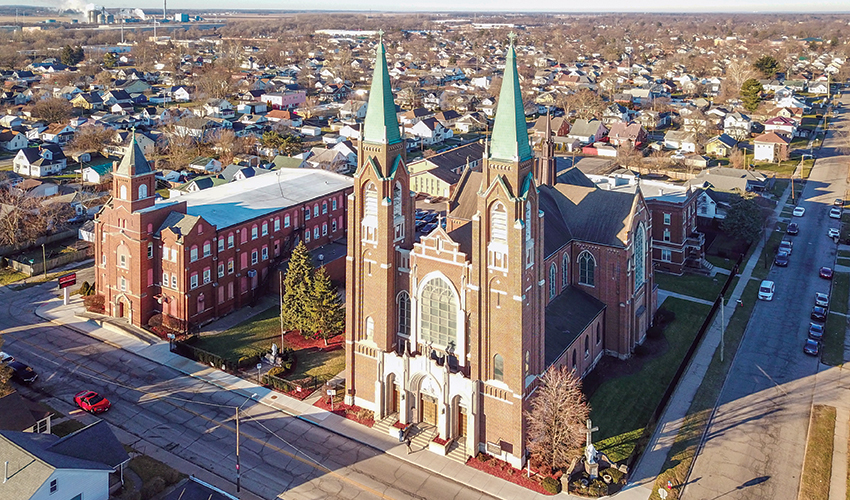In this comment piece, Nguluway DesignInc’s Craig Kerslake and Lynne Hancock check with if we have in excess of-valued privateness to the detriment of social interaction and a feeling of community.
Composed by Craig Kerslake (Wiradjuri architect and Handling Director, Nguluway DesignInc) and Lynne Hancock (Principal, DesignInc Sydney).
Have we above-valued privacy to the detriment of social conversation and a sense of community? Indigenous contemplating would counsel we have.
Nguluway DesignInc has designed a Planning from Nation technique that values and encourages the incidental social sparks sparks that take place the place living spaces are right linked to circulation spaces exactly where front doorways are also open doors in which home is the full developing and not just the unique condominium. This applies to a range of typologies, from medium-density flats and seniors living to communal and co-residing.
The essential strategy is predicated on reprioritising ‘connection’ as opposed to own independence connecting us initially to character, and then to each individual other. When private spaces have a position, the obsession with privacy at all prices is challenged.

Brackish room at all scales
Auntys Houseis a medium-density housing strategy that employs the wide definition of ‘family’ in Aboriginal communities to rethink spatial arranging. The program stacks apartments higher than each other, with circulation by way of a pedestrian route alongside the front of just about every amount. Even though at first look this has a little something in popular with the ‘street in the sky’ typology that has arrive to determine 1960s social housing, there is a important and mindful difference: the layering of spatial zones to aid link and treatment across several households.
An intermediate space amongst the general public and private produces what in Aboriginal conditions could be known as a brackish space a position for mingling alternatively than separating. From the entry path, just about every apartment has a generous verandah or porch that prospects directly to the residing rooms, with private bedrooms behind. This flips the common Western layout, in which the rooms right away off the walkway are additional defensive than they are inviting: utilities, kitchen, occasionally a bedroom and the residing areas and balcony are dealt with as thoroughly private areas, out of the reach of general public circulation.
When we design and style in brackish areas at the outset, it resets our priorities. It necessitates that we wrap other architectural spatial issues all-around the primacy of the threshold in-concerning room the house where by we occur collectively.
Related: Satisfy Susan Moylan-Coombs

We must also think about the requirements of Elders to age in area, in neighborhood and linked to Place.In the Aboriginal Seniors Housing Spatial Planning Thought masterplan, engagement with community Tharawal Elders educated a design and style for clusters of dwellings all obtainable, all connected by communal out of doors areas, and all inside a landscape location combining endemic crops species, softscape pathways, spots to sit and yarn.
The out of doors areas and verandahs optimise prospects for conversation, while privacy is maximised in the sleeping locations. The masterplan method started devoid of structures, manufacturing a sketch that simply just positioned 4 neighbourhoods on the web-site in a non-classic method that was however embraced by the client.
More afield, we generated an choice housing structure reflective of and ideal for the Anangu individuals in Central Australia.Planning from Place at every single step, the setting up considers social dynamics these kinds of as extended family preparations and specific gender spaces, protocols all-around different spaces, and connecting developed type to ‘Grandmother earth.’ Layering spaces close to the cultural plan of journey, an experiential hierarchy was set up from the community point of arrival into additional personal, introspective spaces. Versatile sleeping and living options are now viable for visitors, with seats that can renovate into sleepout beds and enable folks to take benefit of the cool breezes.
These pilot jobs bring First Nations cultural values and kinship buildings to medium-density housing, seniors housing and co-residing typologies. The technique could equally nicely be used to person dwellings. No matter whether apartments or properties, the rewards to citizens and their surrounds lie in fostering connections, producing a feeling of belonging and creating local community.


Designing from Nation, the Housing SEPP and affordability
How is Planning from Country appropriate to the Housing SEPP (Condition Environmental Planning Coverage), and to economical housing and housing commonly?
With escalating populations, and housing anxiety apparent throughout Australias cities and towns, the extremely idea of a ‘slow time’ strategy to being familiar with and responding to position looks to contradict the need to have for speed of supply. Doesnt Creating from Country just get in the way of effectiveness and chance clogging up the pipeline?
The reforms in the new Housing SEPP intention to increase offer and shipping and delivery of inexpensive housing for the benefit of reduce- and average-cash flow homes. For developers, this spells a great deal of gains. Escalating the advancement potential of web-sites by way of top and flooring area ratio (FSR) bonuses effectively increases the benefit of that website place crudely, you can get far more ‘bang for your buck.’ Whilst an incentive, it is also a danger if the advantages are not handed on to inhabitants.
We believe that it is probable to do equally: that, as perfectly as acquiring a lot more residences, there is also an option to structure them superior. From our viewpoint, this is an moral imperative.


Rethinking how we live with each other in our local community opens up new options for housing style and design.
Think about the social impact of shifting the emphasis from bigger private areas towards more substantial shared areas. It doesnt automatically suggest developments need to have to turn out to be extra ‘space-hungry’ somewhat, a redistribution of areas in the living environment can provide a number of purposes such as functionality, amenity, sustainability and group.
An Indigenous lens on the Housing SEPP implies the social prerequisites of people and the aspirations of developers are fulfilled somewhere in brackish area. The outcomes can in reality be a lot more useful on a lot of amounts. When people today feel extra linked to the natural natural environment and there are potent social bonds and neighborhood, real estate also improves in benefit. The enduring consequence is much better neighbourhoods, social harmony and a perception of identity.
Nguluway Designinc
nguluway.designinc.com.au

